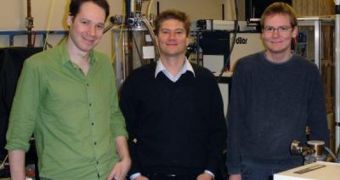German researchers at the Technische Universitaet Muenchen (TUM) announce that they have made important progress in the development of an ultra-high-resolution imaging technique for biological samples. The new method would use X-ray diffraction to peer inside living cells, and determine the way they are put together, as well as the components that act at a small scale. Details of the work appear in the latest issue of the journal Proceedings of the National Academy of Sciences (PNAS).
The group reports that progress has already been achieved in improving on last year's “lensless” X-ray microscopy technique, which the scientists themselves created. The group says that this line of work is absolutely vital for fields of research such as evolutionary biology and biotechnology. Being able to observe nanoscale structures in living cells could enable experts in these areas to gain a deeper understanding of the ensemble of functions and processes that cells undergo, and also aid them in designing better drugs to address a number of conditions.
What the scientists are working on at this point is extending their method to three-dimensional imaging of biological cells. But one of the main problems plaguing the development of new and advanced microscopes is the difficulty associated with producing high-quality X-ray lenses. This is really a shame, experts say, because the short wavelength of X-ray radiation allows it to be used for gathering massive amounts of detail at the nanoscale. In an attempt to solve the problem, many groups have turned to “lensless” microscopy methods, which is precisely what the TUM team did as well.
In the new investigation, the scientists were able to revolutionize an existing imaging method, known as ptychography, to obtain accurate maps of the electron density forming a biological sample. The study was led by the chair of the biomedical physics group at the TUM, Franz Pfeiffer. The German team also cooperated with colleagues from the University of Goettingen and at the Villigen-based Swiss Light Source. The work was funded by the German Research Foundation (DFG), the Helmholtz Society, and the German Ministry of Education and Research.

 14 DAY TRIAL //
14 DAY TRIAL //